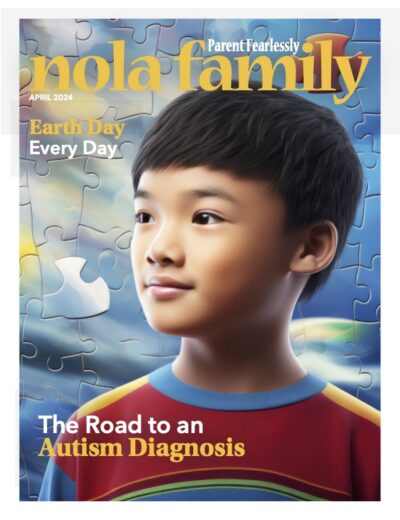Concussions In Kids
When recreational sports cause traumatic brain injuries.
Several months ago, 9-year-old Tristan Cordes was playing football and collided heads with a teammate, causing him to fall and take a second blow to the head. He never lost consciousness, and he showed no symptoms that something was wrong—other a headache—until the next day. That’s when he developed an extreme sensitivity to sound, dizziness, nausea, sleep disruption, balance problems, and had a hard time staying on task. He was suffering from a double-concussion.
The CDC estimates that there are roughly 1.6 to 3.8 million concussions cases each year; one reason the number varies so greatly is because many go undiagnosed.
Concussion: A traumatic brain injury
A concussion is a type of traumatic brain injury that jars or shakes the brain inside the skull, disrupting the way the brain normally functions. It’s not just direct blows to the head that can cause concussions; they can occur from injuries to other parts of the body that result in the head and brain being jarred.
A common misconception about concussions is that they result in the loss of consciousness; in fact, upwards of 90% of those sustaining a concussion remain awake in the immediate aftermath of their injuries. Within a few hours, symptoms typically present themselves.
Aaron Karlin, M.D., director of the Ochsner Pediatrics Concussion Management Program, sees up to 14 concussion patients a day. He says that prompt recognition of concussion symptoms can be the key to your child’s health and recovery. Headaches, nausea, vomiting, light sensitivity, sensitivity to sound and ringing in the ears are common; sleep disruption—sleeping all the time or barely sleeping at all—and changes in a child’s emotions and temperament are also important signs to look for.
With its head-banging tackling, football is the highest-rated sport for concussions—from the pee-wee leagues up through the pros. Overall, girls get more sports-related concussions in comparable sports (soccer, basketball and softball) than their male counterparts (playing soccer, basketball and baseball). About 40% of sports-related concussions involve kids ages 8– 13. Studies show that girls have more symptoms and take longer to heal than boys; both boys and girls take longer to heal than adults. Beyond team sports, youth concussions also result from bicycle and playground falls.
Accurately diagnosing concussions
If you have a child over age seven who plays in organized youth sports, then you’ve likely signed a form detailing the risks of concussion and of continuing to play after possibly sustaining one. Coaches have been given this information as well, and the LA Youth Concussion Act requires that if they suspect a player might have one, they cannot allow that player to return to the sport without a doctor’s note of release. Unless it’s from a doctor trained specifically in concussions, that note might provide a false sense of security.
Upon a suspected injury, most parents will take their child to an emergency room, which is a good place to start, says Dr. Karlin, but not always the best place to end. Typically tests run in the ER will come back normal, deterring parents from remaining on a vigilant watch for symptoms or seeking other opinions. “Ninety-nine percent of the time, you can have a concussion and a CAT scan or MRI will not pick it up,” explains Dr. Karlin.
Concussion treatment and recovery
Concussions are treated with physical and cognitive rest. Even if a patient feels better, she should refrain from extreme physical activity and overexertion of the brain for 10-14 days. Dr. Karlin suggests that children be put on the ‘30 minute treatment’—30 minutes of television, video games, hand-held devices, or reading, followed by 30 minutes of rest. Studies have shown that kids who jump back fully into tasks requiring cognitive activity had longer recoveries than those who limited them.
While many children can heal in 14 days, others may take much longer, even for mild concussions. Studies show that about 20% of children who experienced mild concussions had symptoms lasting more than a year. To be released from a physician’s care, a patient needs to be symptom-free and pass balance and cognitive tests and, if warranted, neurological scans. After being released, a child is advised to resume activities slowly until he can build back up to his pre-concussion abilities. That goes for both physical and mental tasks.
In the weeks following his concussion, Tristan attended school for half-days and took Fridays off completely. He was released from Dr. Karlin’s care just a few weeks ago, and Melissa sees her son as symptom-free. It was a long road.
“I never knew that a concussion could affect your daily life as much as it does, or how important every little symptom is,” she says.
By Krystral Cooper Christen, a New Orleans native and a freelance writer living in Marrero. She is mom to Ramsey (9) and Kolbie (5).
Tips to avoid a sports-related concussion
-Ensure that your child follows her coach’s rules for safety.
-Encourage good sportsmanship at all times.
-Make sure your child wears the protective equipment for his activity during games and practices; equipment should fit properly.
-Your child’s helmet will reduce the risk of a serious brain injury or skull fracture, but note that there are no “concussion-proof” helmets; even helmeted players should avoid hits to the head.
–from the CDC

